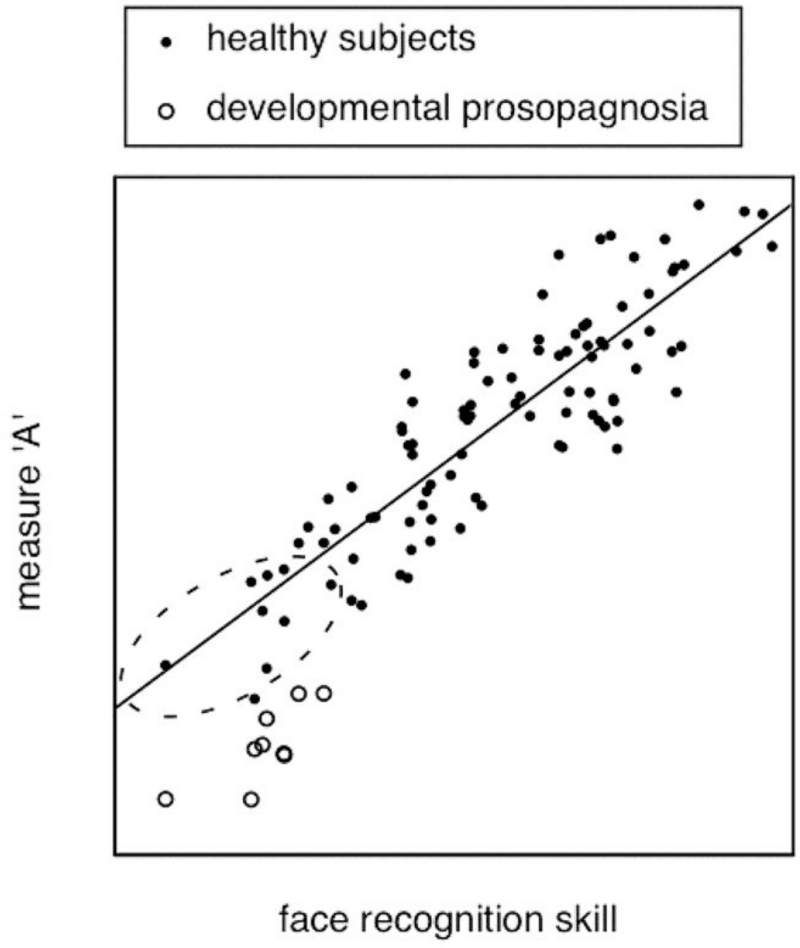Figure 2.
A hypothetical qualitative difference in perceptual performance that might distinguish developmental prosopagnosia from those bad at faces. Suppose that there is some perceptual measure A that is a linear function of face recognition skill in the normal population, so that those on the low end of the normal distribution still follow this linear function. If the developmental prosopagnosic subjects performed worse on measure A than predicted by the linear relationship in healthy subjects, then they would occupy a part of this performance space that was distinct from that containing those simply bad at faces (the dashed oval).

